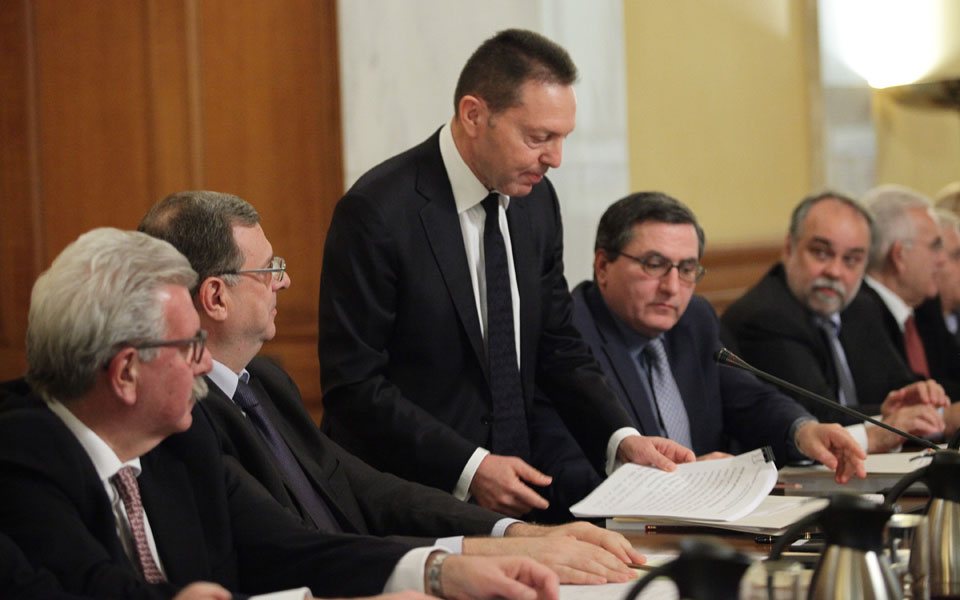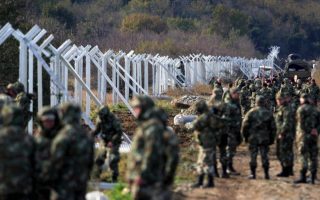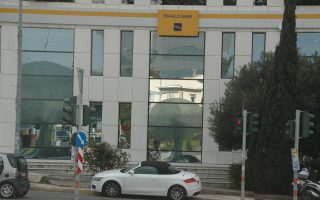Credit system must cut its NPL stock

The refugee and immigration crisis is dominating the news and is hurting Greece’s image as a tourism destination on one hand but helping the economy via higher spending on another. Although the importance of this crisis should not be underestimated, limited progress on other important matters such as non-performing loans should not be ignored. Bank of Greece Governor Yannis Stournaras could not have been clearer when he recently warned against the “business as usual” approach taken by banks so far.
The inability to handle 20,000-25,000 refugees and migrants trapped in the country after the Former Yugoslav Republic of Macedonia’s decision to essentially close its border with Greece highlights the inefficiency and ineffectiveness of the responsible state authorities. It also demonstrates the high cost incurred by Greek taxpayers to maintain this bureaucracy. This is happening despite a good deal of help provided by nongovernmental and relief agencies on the islands and elsewhere.
The refugee crisis could turn into a humanitarian crisis if they keep coming in droves from Turkey and a working allocation system among EU countries is not established. However, the impact of this crisis on the Greek economy is not easy to estimate. In 2015, it could well have been positive if the effect on tourism was negligible to very small. This is because local transportation – ships, buses and taxis – got a boost as the refugees paid the tickets themselves. The same was true with lodgings, food and retail shops in some islands throughout the year.
The cost of overtime pay and extra fuel used by the coast guard and the navy amounted to just about 14 million euros according to a reliable source who has seen the relevant figures. This does not take into account any EU money that Greece either tapped or was unable to tap in 2015.
Of course, the deterioration of the situation after the essential closure of the FYROM border has certainly clouded the prospects for tourism from certain foreign markets like Germany. However, it is still too early to draw conclusions about the size of the impact on this sector. On the other hand, Greece should receive a good deal of money from the EU for constructing the hot spots and other venues, as well as for humanitarian assistance. Undoubtedly, it is not easy to see the endgame here without a termination of the war in Syria, the cooperation of Turkey in stemming the flow of immigrants and an EU plan to allocate the refugees in various countries.
At the same time as the refugee crisis is picking up and talks between Greece and its international lenders on the first review of the program continue, limited progress is seen on tackling the thorny issue of non-performing loans (NPLs).
Stournaras could not have been more clear in his speech to the 83th annual meeting of shareholders last week. The Bank of Greece warned that: “a substantial reduction of non-performing loans on bank balance sheets within the next two years” cannot be ensured by the banks’ current “business as usual” approach.
About a month ago, we had also made a similar argument by describing what is going on in the so-called internal recovery units of the four large banks, culminating in the lack of active NPL management, as reported by informed sources. Unfortunately, banks appear to have relaxed after the completion of the recapitalization process in December last year, which seems to be the norm in banks.
Most economists agree that a strong dose of austerity, limited progress in the implementation of structural reforms and the failure of the banking system to streamline its operations and deal with the rising stock of non-performing loans, account for losing 25 percent of GDP.
It is reminded that the stock of non-performing loans increased in 2015. According to official figures, non-performing exposures as a percentage of total exposures (NPE ratio) rose to 43.6 percent at end-September 2015, up from 39.9 percent in December 2014. According to Stournaras, the deterioration was visible and similar in size, roughly 4 percentage points, across all loan categories. The NPE ratio reached 55.4 percent for consumer exposures, 43.3 percent for business exposures and 39. 8 percent for housing exposures.
Some bankers even think this ratio could surpass 50 percent, as it did in Cyprus, if loans were to be categorized properly. According to them, about 20 percent or more of bank loans categorized as current are actually NPLs. There is no doubt that the banking system cannot play its intermediary role and provide fresh loans to the private sector, supporting the economy as long as it does not reduce drastically the stock of NPLs. The latest data showed deleveraging continued last month as credit to the private sector shrank by 2.2 percent year-on-year and outstanding loans fell to 203.12 billion euros compared to 204.34 billion at the end of 2015.
There is no doubt the immigration crisis is the dominant theme of these days. However, we have to wait and see how it evolves in the next few weeks and even months before we are able to provide a reasonable assessment of its impact on the economy. At the same time, it is also important not to lose sight of the alarming “business as usual” approach taken by local banks in tackling their high NPL stock, as Stournaras pointed out.
[Kathimerini English Edition]





